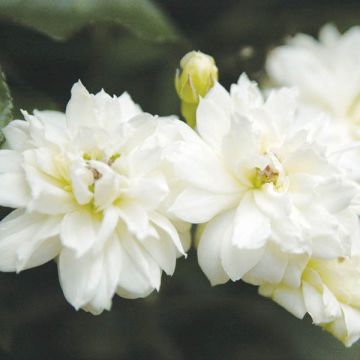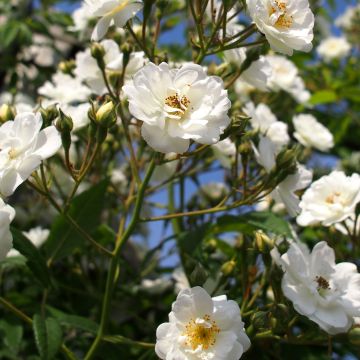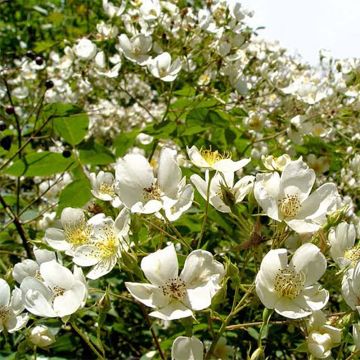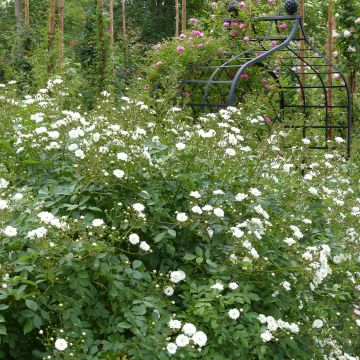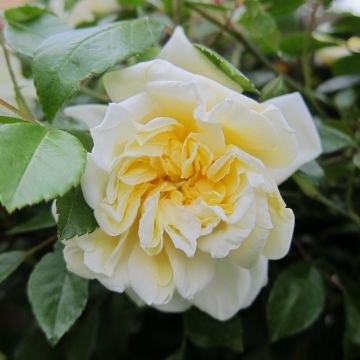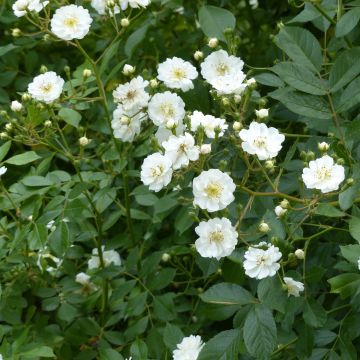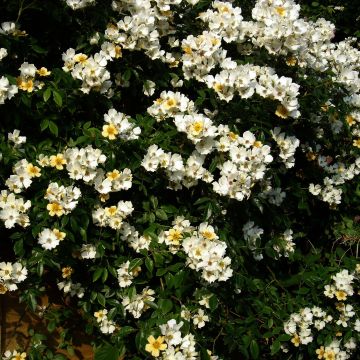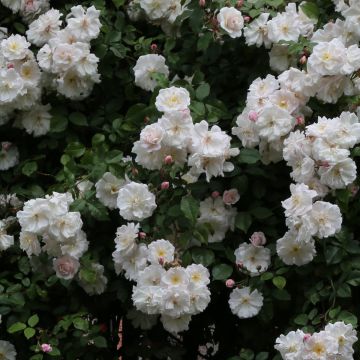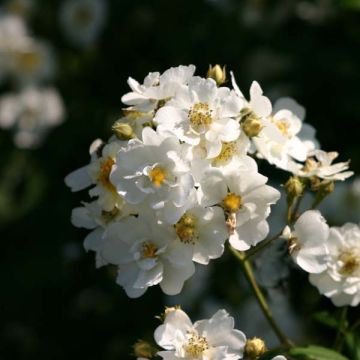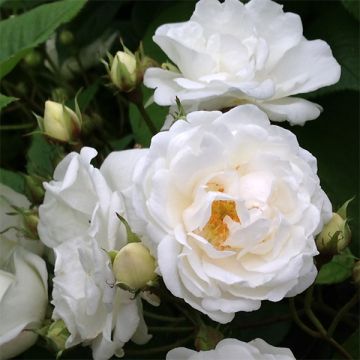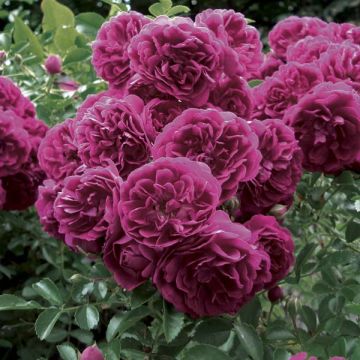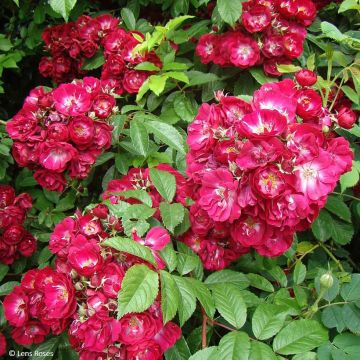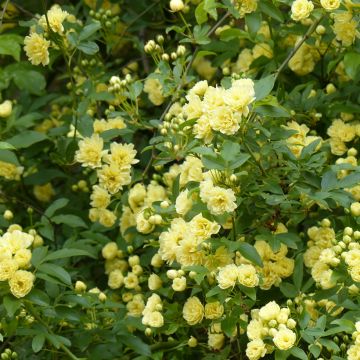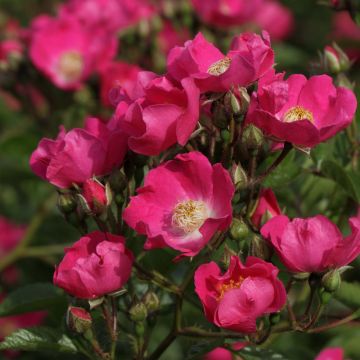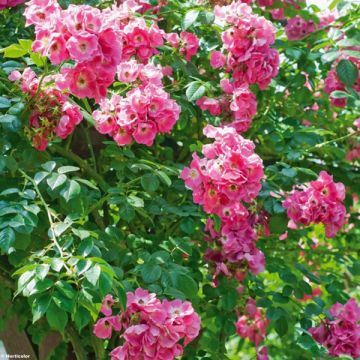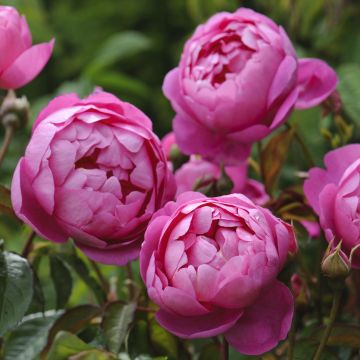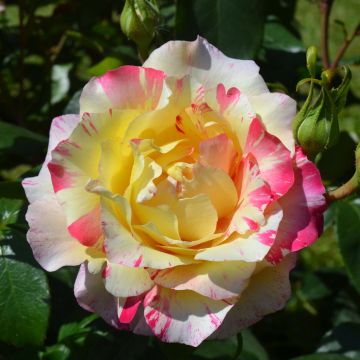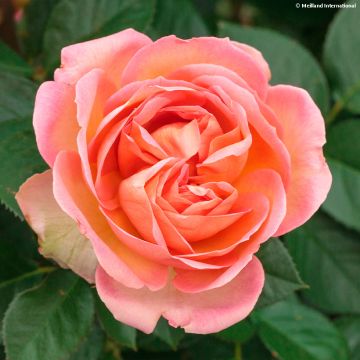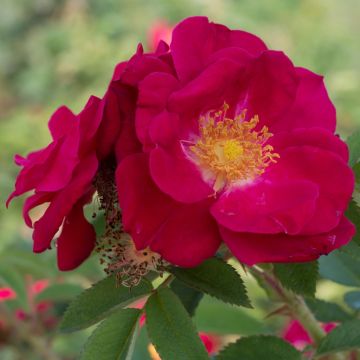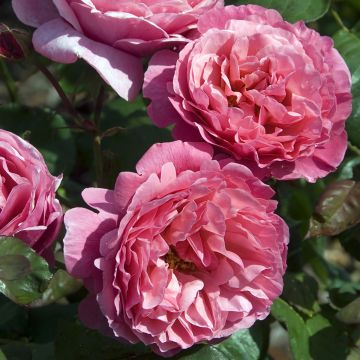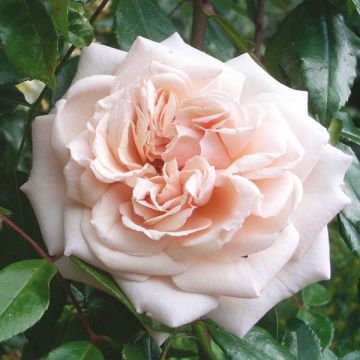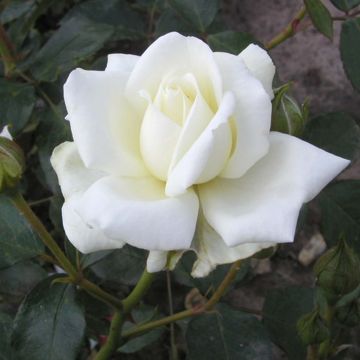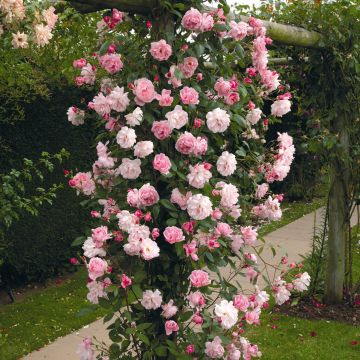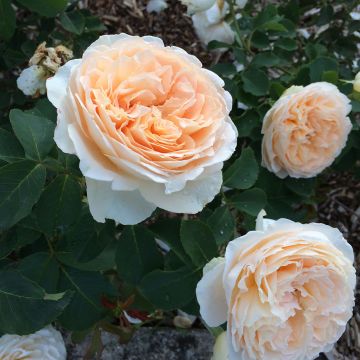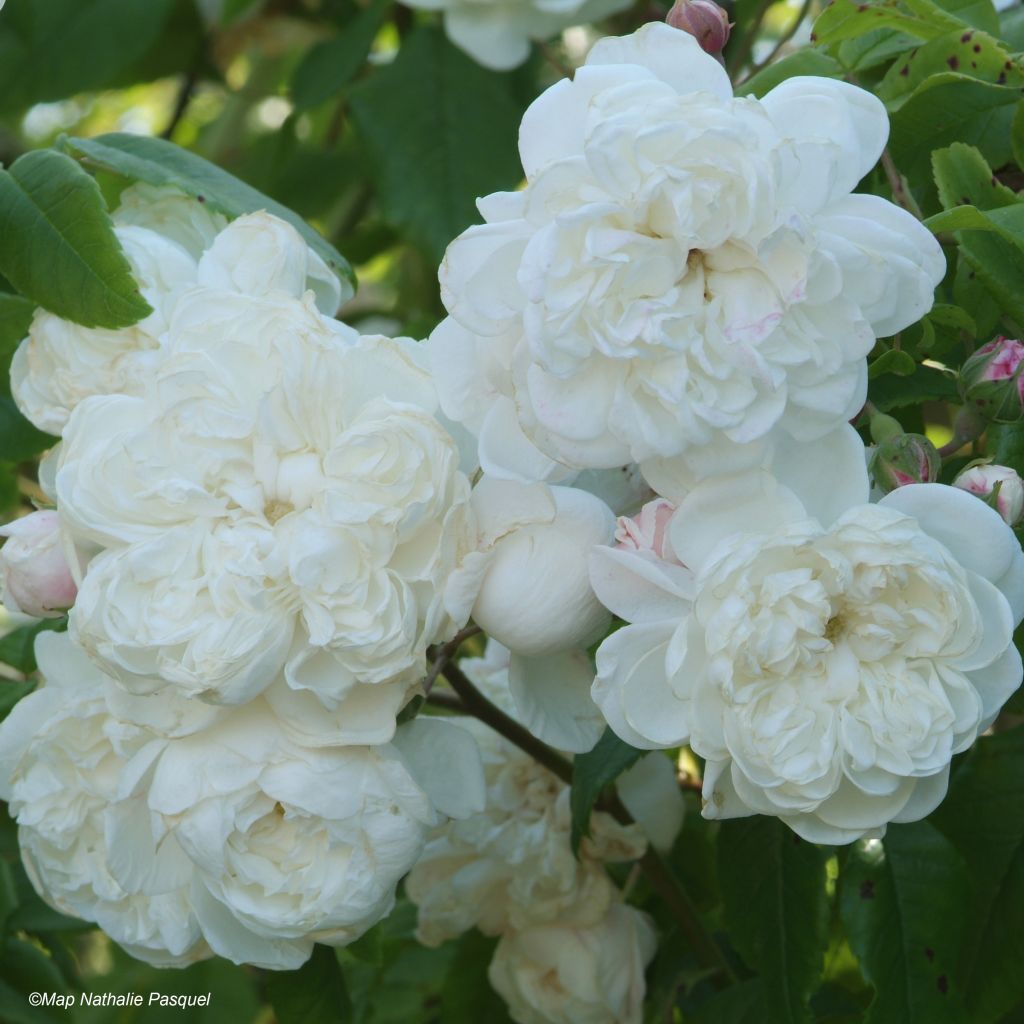

Rosa x noisette 'Aimée Vibert'
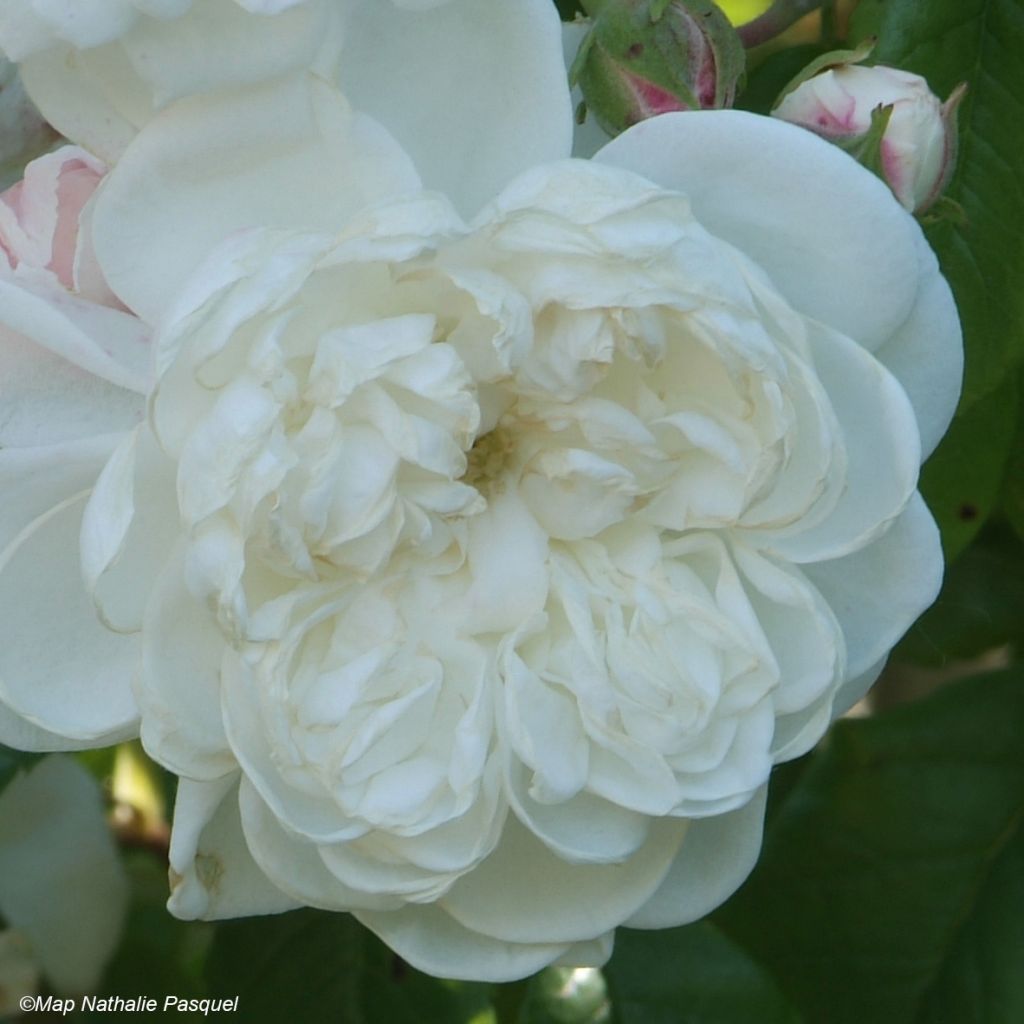

Rosa x noisette 'Aimée Vibert'
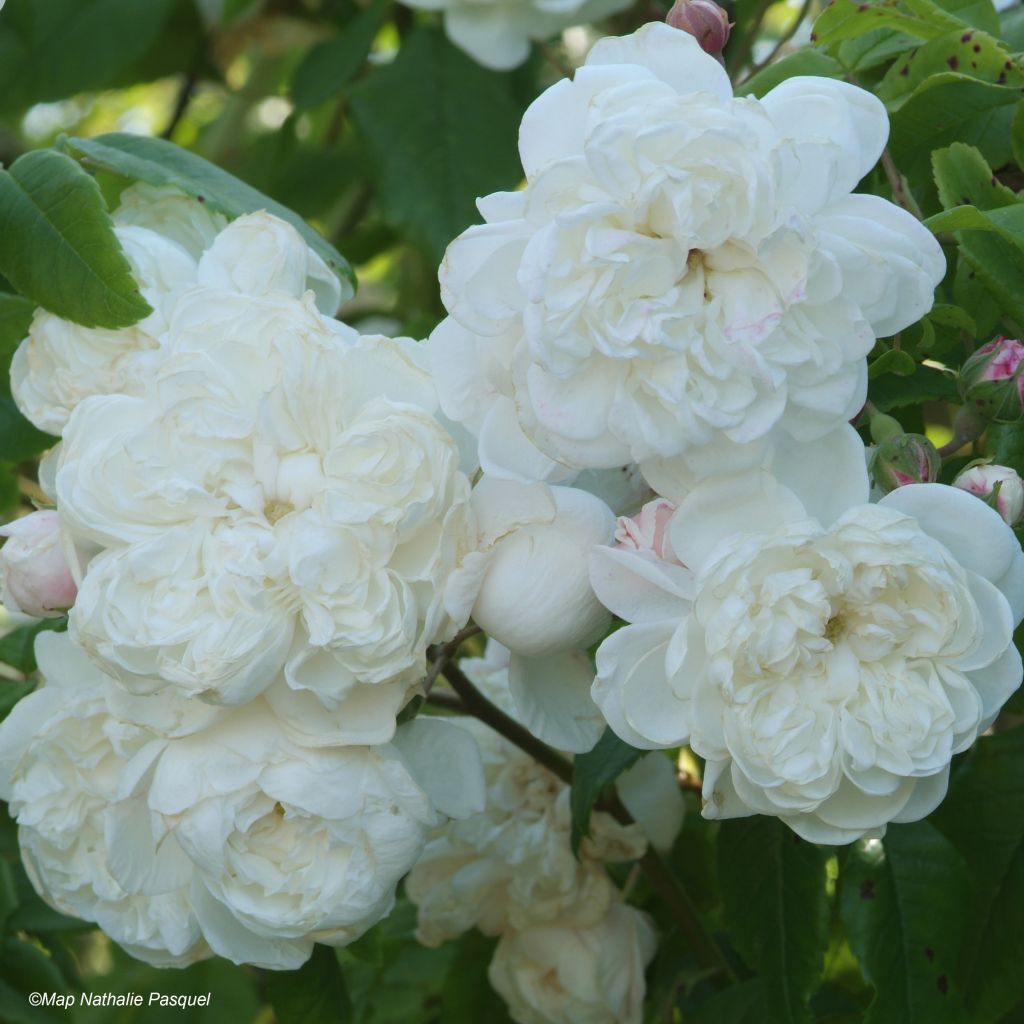

Rosa x noisette 'Aimée Vibert'
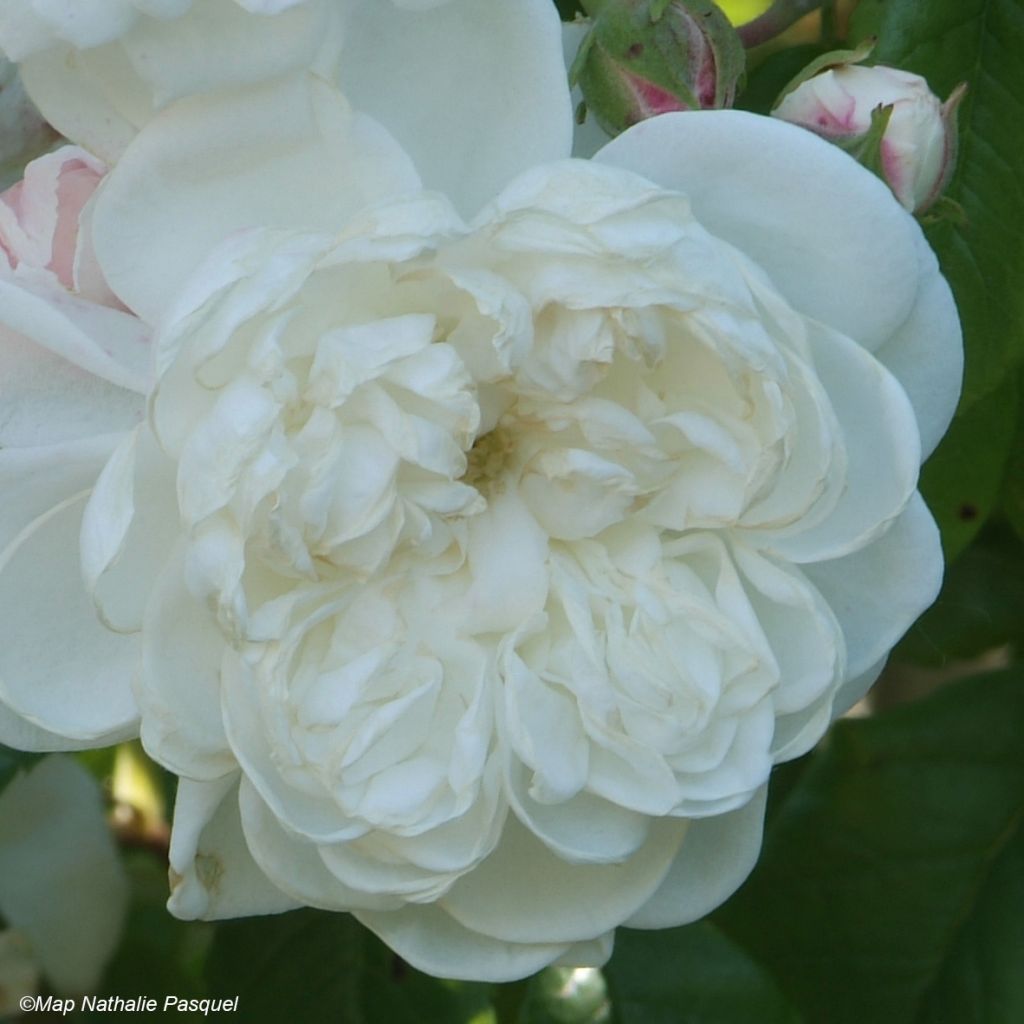

Rosa x noisette 'Aimée Vibert'
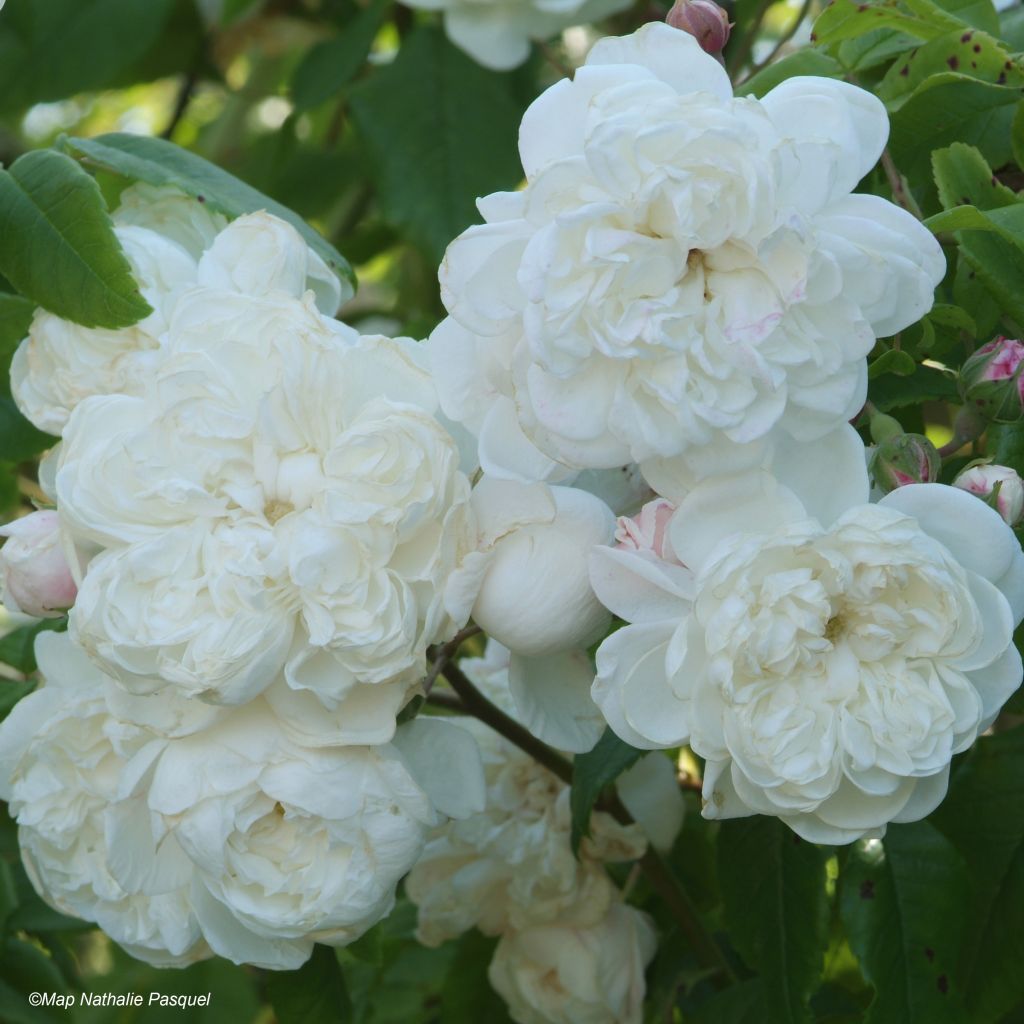

Rosa x noisette 'Aimée Vibert'
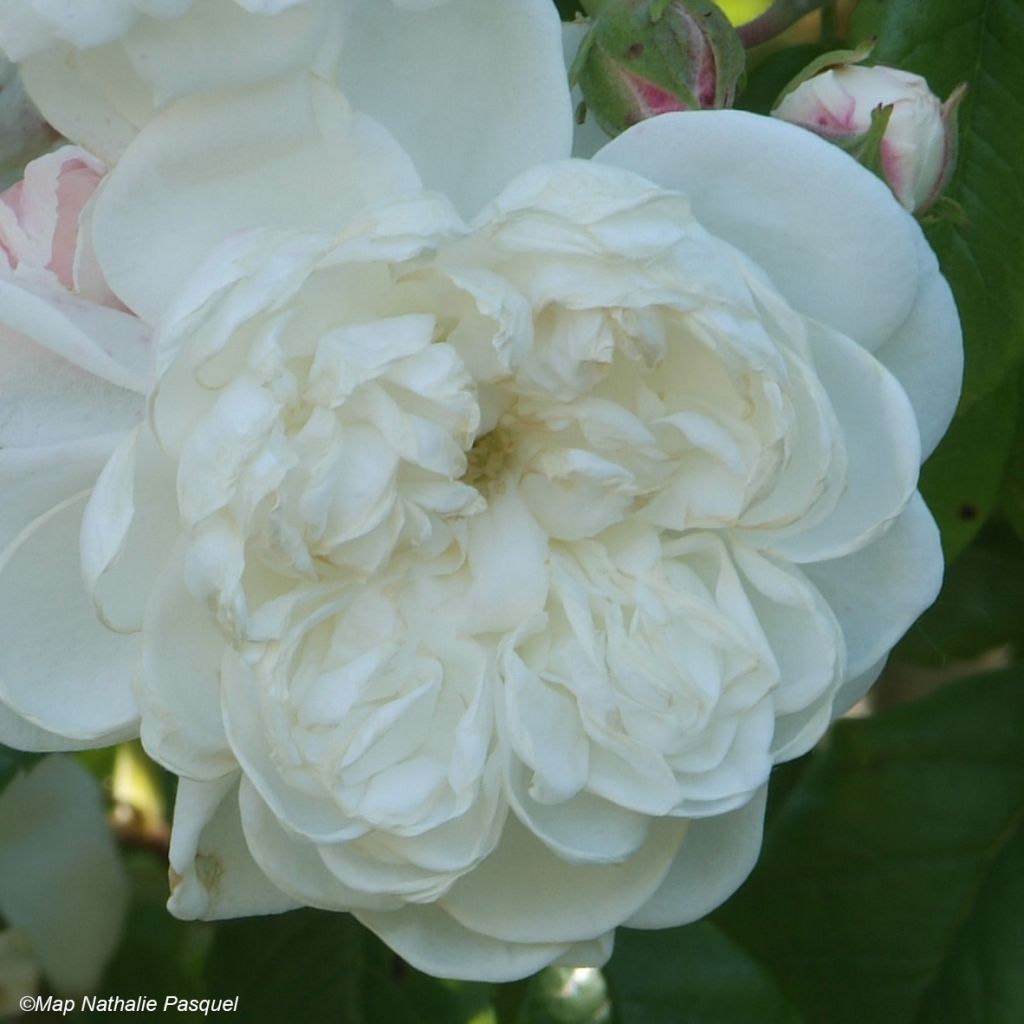

Rosa x noisette 'Aimée Vibert'
Rosa x noisette 'Aimée Vibert'
Rosa x noisette Aimée Vibert
Noisette Rose
Why not try an alternative variety in stock?
View all →This plant carries a 24 months recovery warranty
More information
We guarantee the quality of our plants for a full growing cycle, and will replace at our expense any plant that fails to recover under normal climatic and planting conditions.
From €5.90 for pickup delivery and €6.90 for home delivery
Express home delivery from €8.90.
From €5.90 for pickup delivery and €6.90 for home delivery
Express home delivery from €8.90.
Delivery to Corse prohibited: UE law prohibits the import of this plant from mainland France to Corse as part of the fight against Xylella fastidiosa. Please accept our sincere apologies.
More information
Does this plant fit my garden?
Set up your Plantfit profile →
Description
The Rose 'Aimée Vibert' is a large climbing rose with almost thornless branches, an excellent variety with a very long flowering period dating back to 1828. It is adorned with round, double roses of medium size in the form of pure white pompoms and is pleasantly scented. They bloom from June until autumn on abundant, superb vegetation highly resistant to disease. This beautiful liana with a strong character is also an undemanding and easy-to-grow plant, requiring little care once established.
This large rose is a complex horticultural hybrid, derived from, among others, the noisette rose, Rosa x noisette (specifically the variety Champney's Pink Cluster) and Rosa sempervirens. Noisette roses are generally highly scented (and sometimes a little frost-sensitive), like their ancestor, the China Rose, and as floriferous as their other ancestor, the Musk Rose. 'Aimée Vibert', also known as 'Bouquet de mariée', can easily reach a height of 4m (13ft) with a spread of 1.50 to 2m (5 to 7ft). Its long stems are flexible and covered with abundant, very healthy, medium-green foliage. The white flowers of this variety emerge from magenta-pink buds. They form abundantly from mid-June, then regularly reappear in summer, with a timid repeat flowering in September-October, its weak point. The buds open into double roses, 4-5cm (2in) in diameter, pure white with golden stamens, gathered in long bouquets at the end of flexible stems. Coquettish, plump, and charming, they are surrounded by a soft, musky fragrance but fade to a beige hue that is not to the taste of all gardeners. The small fruits that delight birds in the winter are fleshy false fruits called hips. They contain a large quantity of achenes with a single seed.
'Aimée Vibert' is a generous, robust, charming rose with a long flowering period and excellent health. It is so undemanding that it tolerates sandy soils. Like other rambling roses, it is incomparable for filling large spaces and giving a slightly abandoned air planted above overly strict flower beds. It is an ideal companion for dead trees that will revive uncertain fences and ugly buildings or sheds to which it adds a charming touch. Trained on an arch near the terrace, it will create a poetic and fragrant passage while climbing a large pergola entwined with the branches of vigorous clematis like 'Montana', 'Prince Charles' or Clematis terniflora.
Report an error about the product description
Rosa x noisette 'Aimée Vibert' in pictures
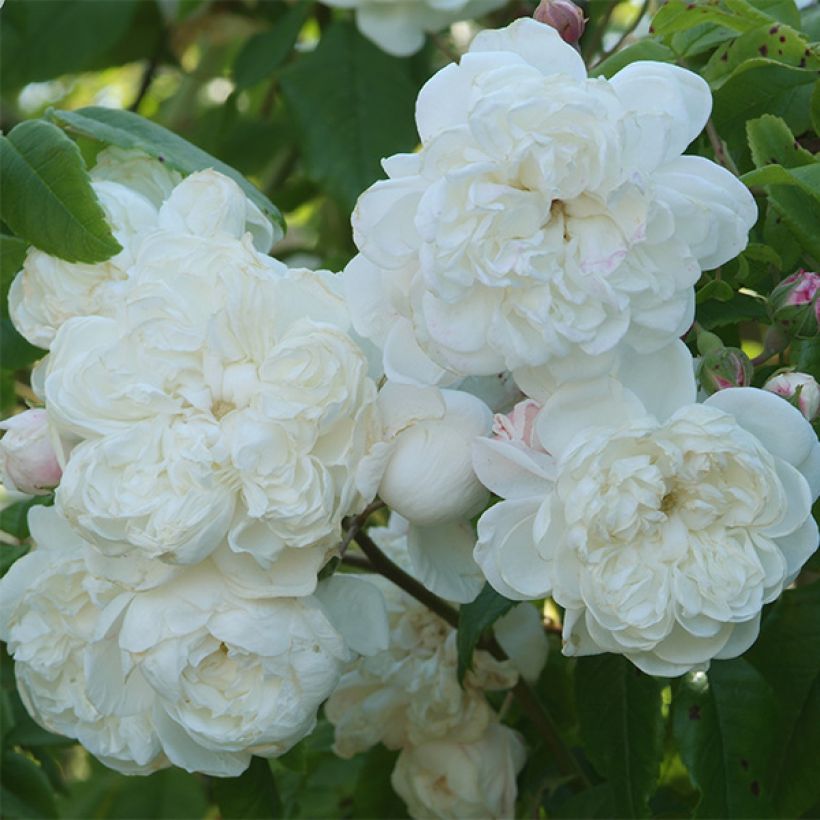

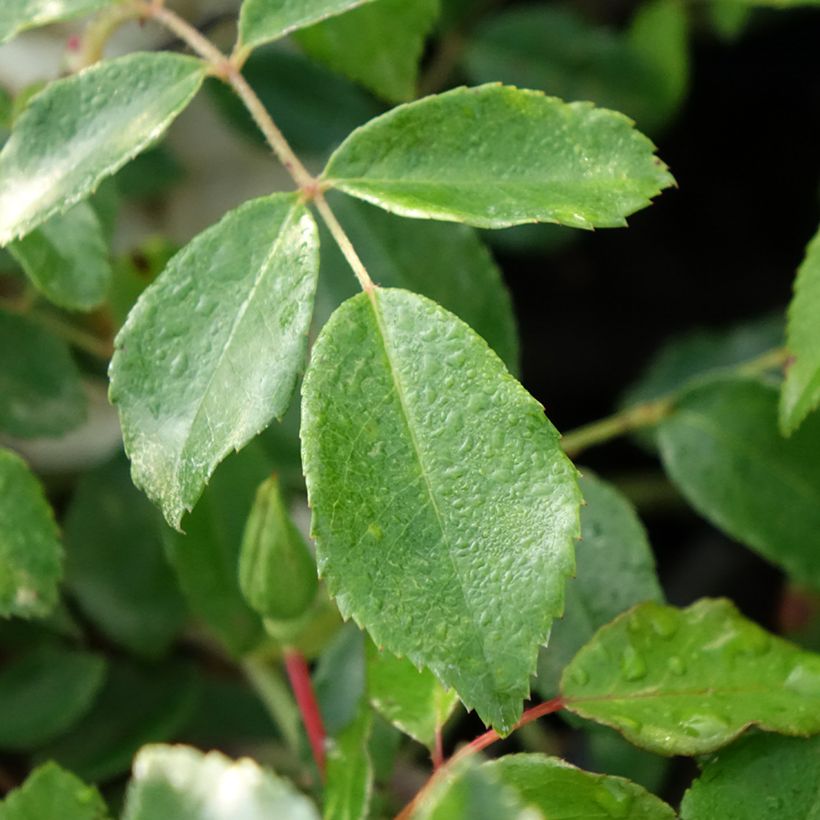

Plant habit
Flowering
Foliage
Botanical data
Rosa
x noisette
Aimée Vibert
Rosaceae
Noisette Rose
Cultivar or hybrid
Rosa canina Laxa (4L/5L pot, Wrapped bare root)
Other Rambling Roses
Planting and care
The Aimée Vibert rose is a versatile plant that can adapt to various soil types, including heavy or sandy soils, as long as it is planted with care and provided with adequate water and nutrients. It thrives in well-drained, well-worked ordinary soil and can be planted in a sunny or semi-shaded location during autumn, but never in freezing conditions.
To achieve optimal flowering, it is recommended to prune the 2-year-old branches, leaving 3 or 4 buds or pruning them to 15 cm (6in). This allows for the growth of new, strong stems while removing any old and weak ones if necessary. The rose can withstand harsh winter conditions, including temperatures as low as -20°C (-4°F), and if the branches freeze to the ground, it will regrow from the base in spring. In winter, it may be useful to remove dead wood, while faded flowers can also be removed if fruit formation is not desired. Light pruning in spring, after the risk of frost, is also possible. If there is enough space, climbing roses can be allowed to grow freely.
If you plant a climbing rose next to a living tree, it can compete with the tree's already established root system. To control watering, you can plant the rose in a large container with a perforated bottom at the base of the tree. The tree's roots will not penetrate the container for at least a year. After one year, you can remove the container by cutting one side without disturbing the rose's root system. By then, the rose will have had enough time to develop its root system, making it more resistant.
Towards the end of summer, roses may become stained or unsightly, but this is a natural phenomenon that does not harm the plant's development.
Planting period
Intended location
Care
-
, onOrder confirmed
Reply from on Promesse de fleurs
Fragrant Roses
Haven't found what you were looking for?
Hardiness is the lowest winter temperature a plant can endure without suffering serious damage or even dying. However, hardiness is affected by location (a sheltered area, such as a patio), protection (winter cover) and soil type (hardiness is improved by well-drained soil).

Photo Sharing Terms & Conditions
In order to encourage gardeners to interact and share their experiences, Promesse de fleurs offers various media enabling content to be uploaded onto its Site - in particular via the ‘Photo sharing’ module.
The User agrees to refrain from:
- Posting any content that is illegal, prejudicial, insulting, racist, inciteful to hatred, revisionist, contrary to public decency, that infringes on privacy or on the privacy rights of third parties, in particular the publicity rights of persons and goods, intellectual property rights, or the right to privacy.
- Submitting content on behalf of a third party;
- Impersonate the identity of a third party and/or publish any personal information about a third party;
In general, the User undertakes to refrain from any unethical behaviour.
All Content (in particular text, comments, files, images, photos, videos, creative works, etc.), which may be subject to property or intellectual property rights, image or other private rights, shall remain the property of the User, subject to the limited rights granted by the terms of the licence granted by Promesse de fleurs as stated below. Users are at liberty to publish or not to publish such Content on the Site, notably via the ‘Photo Sharing’ facility, and accept that this Content shall be made public and freely accessible, notably on the Internet.
Users further acknowledge, undertake to have ,and guarantee that they hold all necessary rights and permissions to publish such material on the Site, in particular with regard to the legislation in force pertaining to any privacy, property, intellectual property, image, or contractual rights, or rights of any other nature. By publishing such Content on the Site, Users acknowledge accepting full liability as publishers of the Content within the meaning of the law, and grant Promesse de fleurs, free of charge, an inclusive, worldwide licence for the said Content for the entire duration of its publication, including all reproduction, representation, up/downloading, displaying, performing, transmission, and storage rights.
Users also grant permission for their name to be linked to the Content and accept that this link may not always be made available.
By engaging in posting material, Users consent to their Content becoming automatically accessible on the Internet, in particular on other sites and/or blogs and/or web pages of the Promesse de fleurs site, including in particular social pages and the Promesse de fleurs catalogue.
Users may secure the removal of entrusted content free of charge by issuing a simple request via our contact form.
The flowering period indicated on our website applies to countries and regions located in USDA zone 8 (France, the United Kingdom, Ireland, the Netherlands, etc.)
It will vary according to where you live:
- In zones 9 to 10 (Italy, Spain, Greece, etc.), flowering will occur about 2 to 4 weeks earlier.
- In zones 6 to 7 (Germany, Poland, Slovenia, and lower mountainous regions), flowering will be delayed by 2 to 3 weeks.
- In zone 5 (Central Europe, Scandinavia), blooming will be delayed by 3 to 5 weeks.
In temperate climates, pruning of spring-flowering shrubs (forsythia, spireas, etc.) should be done just after flowering.
Pruning of summer-flowering shrubs (Indian Lilac, Perovskia, etc.) can be done in winter or spring.
In cold regions as well as with frost-sensitive plants, avoid pruning too early when severe frosts may still occur.
The planting period indicated on our website applies to countries and regions located in USDA zone 8 (France, United Kingdom, Ireland, Netherlands).
It will vary according to where you live:
- In Mediterranean zones (Marseille, Madrid, Milan, etc.), autumn and winter are the best planting periods.
- In continental zones (Strasbourg, Munich, Vienna, etc.), delay planting by 2 to 3 weeks in spring and bring it forward by 2 to 4 weeks in autumn.
- In mountainous regions (the Alps, Pyrenees, Carpathians, etc.), it is best to plant in late spring (May-June) or late summer (August-September).
The harvesting period indicated on our website applies to countries and regions in USDA zone 8 (France, England, Ireland, the Netherlands).
In colder areas (Scandinavia, Poland, Austria...) fruit and vegetable harvests are likely to be delayed by 3-4 weeks.
In warmer areas (Italy, Spain, Greece, etc.), harvesting will probably take place earlier, depending on weather conditions.
The sowing periods indicated on our website apply to countries and regions within USDA Zone 8 (France, UK, Ireland, Netherlands).
In colder areas (Scandinavia, Poland, Austria...), delay any outdoor sowing by 3-4 weeks, or sow under glass.
In warmer climes (Italy, Spain, Greece, etc.), bring outdoor sowing forward by a few weeks.

































